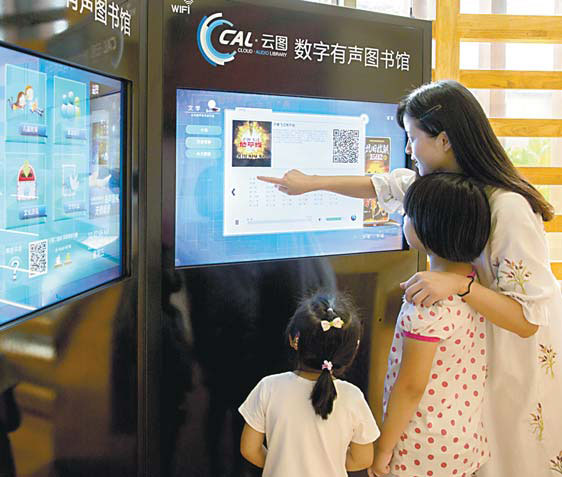Arts, culture institutes grow in popularity

Holidays are the busiest time for Li Liqun, director of Zhangjiagang Digital Culture Center. Since it opened in August, the 400-square-meter center has been crowded with visitors of all ages.
In a dancing room, kids can step on digitally projected balloons to pop them. Another studio features a projector linked to a touchscreen, where visitors can select dances and lessons, such as hip-hop, traditional dance and ballet, as well as dances from the Xinjiang Uygur and Tibet autonomous regions. Amateur dancers can learn steps, with a DVD teaching the movements in slow motion.
The center's photography area also allows people to use touchscreens to control lighting, choose backgrounds and learn new skills from a video.

A music education area has an electric guitar, bass, keyboard and drums. Another touchscreen shows videos of instructors teaching Western, mainstream traditional Chinese and ethnic songs.
All the facilities can be booked online.
"As Zhangjiagang's economy develops, its residents are becoming more interested in culture and how they use their leisure time," said Li Zhongying, an official in charge of the culture bureau.
From libraries to museums and the theater, people are spending more and more time at cultural and arts facilities. Many also volunteer to help organize cultural events and activities.
Since 2010, the city has run an annual Yangtze River Arts Festival every October, which features a variety of performances and exhibitions. The festival presents not only well-known artists but also promotes local talent and amateur performers.
"We hope to attract people from all walks of life, from different backgrounds and with different tastes," said Li Zhongying.
Zhangjiagang Poly Theater hosts most of the festival performances. Opened in September 2011, it was the first Poly Theater in a county-level city in China.
Gong Shenglin, general manager of the theater, said, "The large middle class in the Yangtze River Delta is one of the main reasons we opened it in the city. The local government is very supportive as well."
Subsidies from the Zhangjiagang government mean ticket prices for adults are about 100 yuan ($16) each. "This is much cheaper than other cities and affordable for local residents," said Gong.
The theater has attendance rates of about 80 to 90 percent, and it hosts about 100 shows a year on average. "We also rent the theater out to subsidize the shows, so as to ensure local people can enjoy world-class performances at a low price in Zhangjiagang," Gong said.
"The local people were used to watching performances for free. This is what they expected from the Poly Theater at first," said Gong.
One of his focuses is to "cultivate" an audience through attracting local kids with children's shows.
The cost of tickets for the children's shows are lower, and parents in Zhangjiagang regard watching performances at the Poly Theatre as part of the cultural education for their children.
(China Daily European Weekly 10/22/2015 page11)
Today's Top News
- Japan tempting fate if it interferes in the situation of Taiwan Strait
- Stable trade ties benefit China, US
- Experts advocate increasing scope of BRI to include soft power sectors
- New engine powers cargo drone expansion
- China to boost green industry cooperation
- Manufacturing PMI rises in November






























